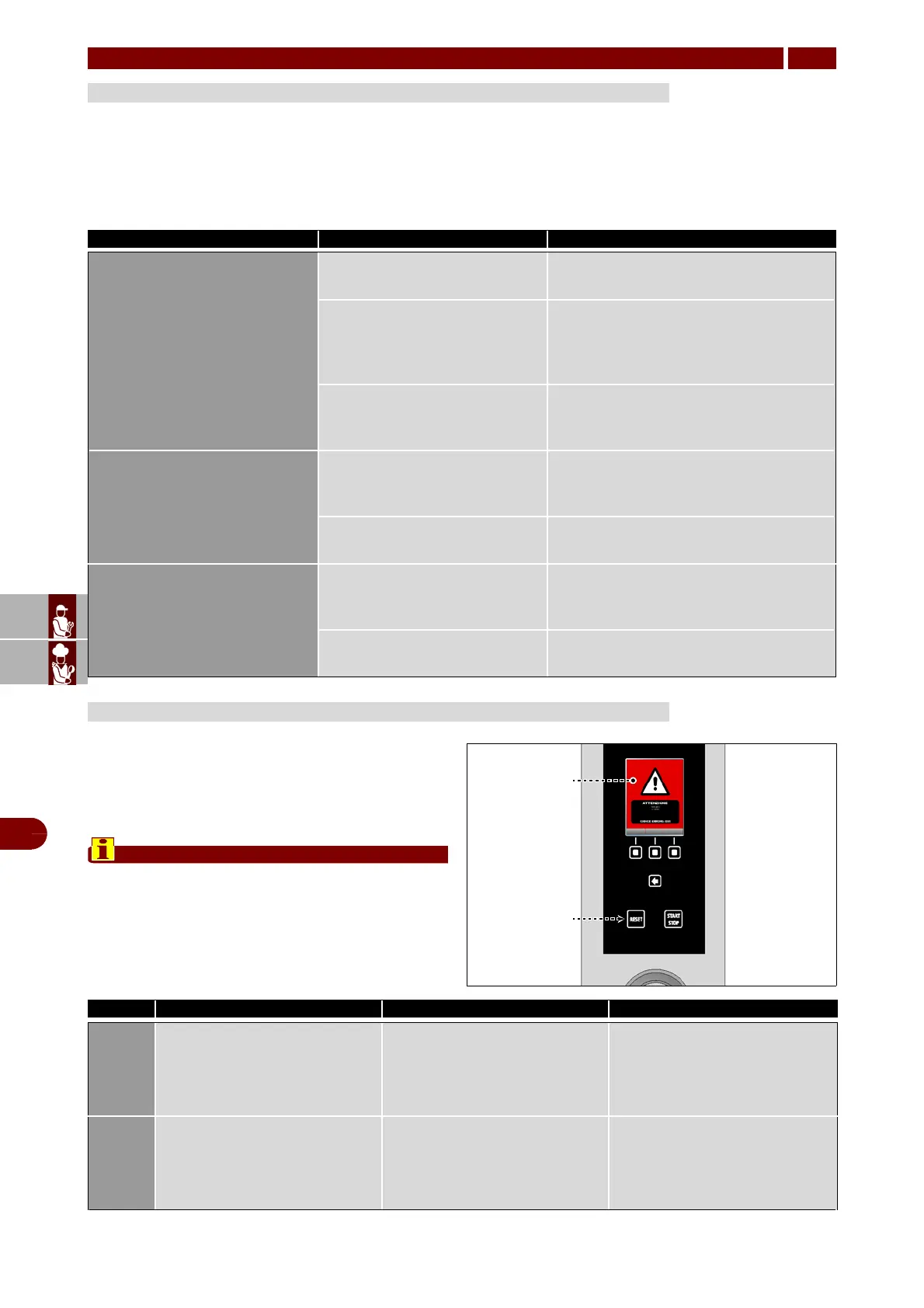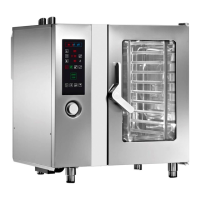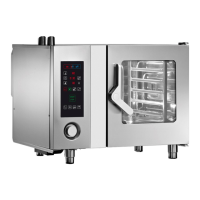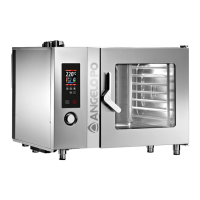ES
FR
DE
GB
IT
C13148123_GB.fIDM
English
-
50
-
Use and installation manual
The appliance has been tested before being put into service.
The information provided below is intended to assist in the identification and correction
of any anomalies and malfunctions which might occur during use.
The user can solve some of these problems himself, but for others specific technical
knowledge or skill is required, and so they must only be carried out by qualified staff
with recognised experience acquired in the specific sector of operation.
If the problem or fault noticed is not amongst those
listed in the table, consult the "Key to Alarms" table
provided below.
The information provided below s intended to identify
the alarm signals which appear on the display (A).
Press button (D) to reset the alarm.
FAULT
6
TROUBLESHOOTING
Fault Remedy Remedy
The appliance does not
switch on
Fuse "blown" Replace the fuse (see page 60)
Safety or protection device
(safety thermostat or overload
cutout) tripped
Press device reset button
Electronic circuit board dam-
aged
Contact the after-sales service
Cooking cycle does not start
or stops suddenly
Control board electronic circuit
board damaged
Contact the after-sales service
Alarm triggered Consult the "Key to Alarms" table
The cleaning cycle does not
start or stops suddenly
Control board electronic circuit
board damaged
Contact the after-sales service
Alarm triggered Consult the "Key to Alarms" table
TABLE OF ALARM INDICATIONS
Alarm Fau lt Remedy Notes
H2O
No water in chamber, or water
pressure too low
Check that mains water is present
or adjust the pressure (see page
59); if the problem persists inform
the after-sales service
Convection cooking cycles can
still be carried out
H2O.
No water at drain, or water pres-
sure too low
Check that mains water is present
or adjust the pressure (see page
59); if the problem persists inform
the after-sales service
Convection and steam cooking
cycles can still be carried out
